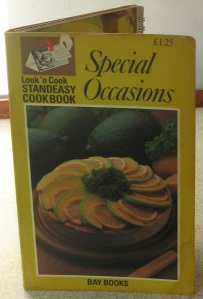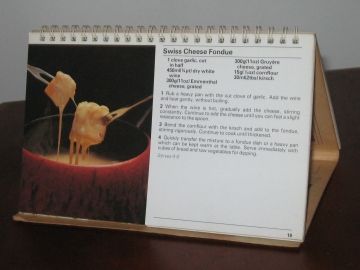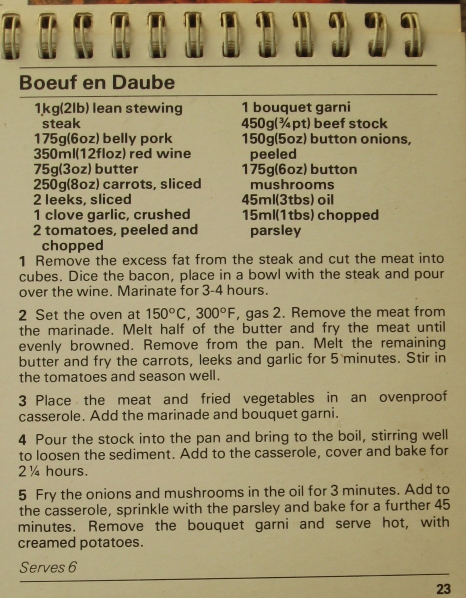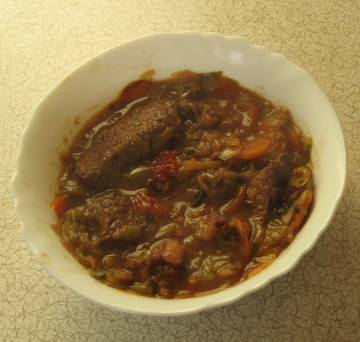One of the great things about this blog are the books people give me – this gem, purchased somewhere in south London, is a stone-cold classic. Spiral-bound like a desktop calendar and part of the ‘Standeasy Cookbook’ series, Special Occasions was published in 1979 by Bay Books, edited by Vivian Allwood, with the home economist Ann Page-Wood. You can tell it’s a late 70s cookbook, because two out of the 48 recipes contain tragically misplaced grapes. As you can see – it’s still fully operational:
Nestled between the recipes for vermouth fish loaf and guinea fowl madelaine however, there are some tasty dishes – dinner party standards like devils on horseback and duck a l’orange and from this range, I chose the boeuf en daube after a craving for beef stew persisted after eating an excellent boeuf carbonnade (made by someone else).
I cooked a much smaller portion than listed in the recipe. used some excellent stewing steak from Marsh produce (currently selling through Harringay market) and instead of belly pork, I used a thick rasher of back bacon. I also added larger quantities vegetables than listed and left the meat to marinate for longer (two days, in fact!). Also, as I added just a couple of dried mushrooms for flavour (and picked them
Results
It may not be lovely looking, but it was easily the best stew I’ve ever made. Whether it was the extra veg or the extra marinating time, the sauce was smooth and delicious with tender (somewhat irregular…) pieces of meat and vegetables. Highly recommended (as long as you add an extra leek).
Daube’d by Elly










You must be logged in to post a comment.